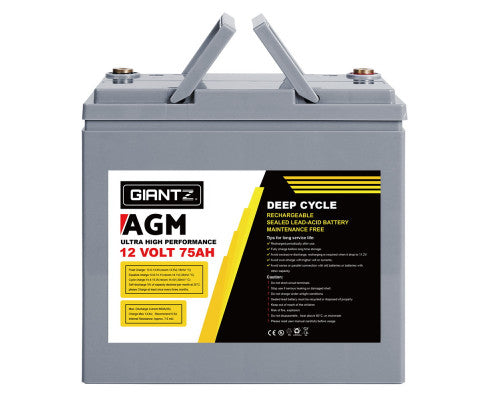sales@tecnotools.com.au
sales@tecnotools.com.au
Call us: 0433 734 100

In the past 10 years, AGM batteries have become very popular in a wide range of industries. However, lead acid batteries are still a very reliable option, and are still the most used battery in the world. What is the difference between these two types of batteries?
Keep reading this article if you would like to find out the typical usage, advantages and disadvantages of AGM and lead acid batteries. After reading through this article will will have enough information to make a decision of which battery is the right one for you.
Before checking the difference between these batteries it is important to know what they are and how they work internally.
AGM stands for Absorbent Glass Mat. Even though it is relatively new to the modern industry. It was created in the 80’s.

Like any other battery, AGM battery has electrolyte inside the battery to generate energy. However, instead of being in a liquid form, the electrolyte is soaked into a glass mat. So instead of having acid floating around inside the battery, the acid is contained in the mat. Making this battery extremely safe and leak-free.
The principle of a lead acid battery is the same as an AGM battery. It contains a negative and a positive electrode made of lead. Both electrodes are submerged in an electrolytic solution of sulfuric acid. The difference is in the AGM battery the electrodes are not immersed in acid, the electrolyte solution is absorbed in the glass mat.
We think it is important to explain what a deep cycle battery is, as both AGM and lead acid batteries can or cannot be deep cycle; and it is likely that you will come across this term sooner or later.
The cycle of discharge combined with the battery capacity is a crucial characteristic in the battery. The energy that a battery can generate depends upon the capacity by the depth of discharge. Batteries can be designed to be deep cycle or shallow cycle batteries.
A deep cycle battery can be discharged in levels greater than 50% of its capacity, and may be discharged up to 80%. On the other hand, the shallow cycle battery must not be discharged in levels greater than 50%.
There is no straight answer for this question. Ultimately, AGM batteries perform better, and can be used in more demanding applications. However, it does not make sense to replace lead acid batteries with AGM one. After all, lead acid batteries are still very popular. As an example, they dominate the automotive industry as a battery to start cars, but is gradually changing at a fast pace, as the vehicles are becoming more demanding of batteries to support many new features.
Most modern vehicles feature technologies and accessories that demand extra performance of the batteries. AGM batteries are the ones designed to meet this high demand of energy. A good example is the automatic stop & start feature. In this feature the car’s engine shuts down when the car stops moving. However, the light, A/C and other high demanding functions still work. When the car is about to move again the engine has to rapidly start again. AGM batteries are the only ones able to cope with this demand.

Lead acid battery was the first rechargeable battery invented approximately 150 years ago. This type of battery is still a cost-effective battery for cars, wheelchairs, scooters, backup systems and many more applications. The lead acid battery has its place in the industry in applications where AGM batteries would be too expensive.
Lead acid battery is not a fast charging battery. Usually it takes 8 to 16 hours to fully charge one. A full charge is a must to prevent sulfation and the battery should always be stored fully charged. Otherwise, a discharged condition may cause sulfation, stopping the battery to ever be charged again.
Due to its low energy densities the lead-acid battery is not suitable for portable devices. Besides, this type of battery does not perform well in low temperatures. The lead acid battery also has acid fluids inside, which make this battery not environmentally friendly.
The AGM battery instead, is the exact opposite. It works very well in cold climates and has not acid fluids inside, making this battery the only viable option to be used in cell phones, tablet and laptops.
I hope the information above can help you to understand what these two types of batteries are and now you are better informed to make a decision of which one best suits your needs. TecnoTools supplies AGM Deep Cycle Batteries to the Australian market. We offer fast shipping country wide and all our products come with a 12 month warranty.
If you would like to know more about our products, do not hesitate to reach out to our responsive customer service team.
« I confirm the subscription of this blog to the Paperblog service under the username tecnotools »